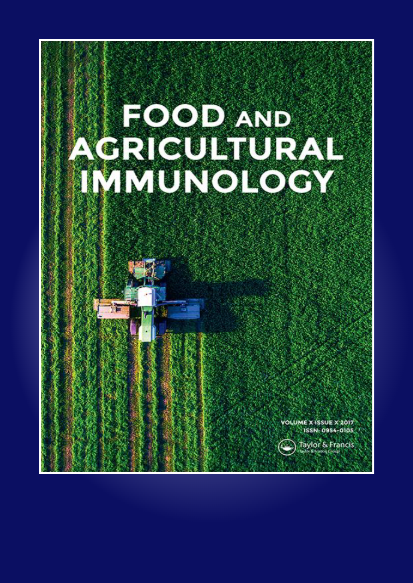Design and synthesis of geosmin derivatives using organic synthesis strategies and application in antibody production
IF 1.7
3区 农林科学
Q3 CHEMISTRY, APPLIED
引用次数: 0
Abstract
ABSTRACT To develop a sensitive and specific ELISA for geosmin (GSM), the research of this study is focused on the design and synthesis of several GSM derivatives, which maintain the whole GSM structure as much as possible and contain a spacer arm with an active group at the end. To form the GSM backbone, tandem organic reaction strategies were used to replace the traditional Robinson cyclization reaction. Five GSM derivatives were synthesized and the formed GSM derivative-protein conjugates were used as the immunogens for the production of polyclonal antibodies against GSM, while four GSM derivatives were synthesized and the GSM derivative-protein conjugates were used as coating antigens for establishing ELISA. The relationship between the structures of GSM derivatives and the antibody properties was explored. Under optimal conditions, the LOD of the ELISA for GSM was found to be 0.16 ng mL−1, and the antiserum was able to specifically recognize the GSM backbone.利用有机合成策略设计、合成geosmin衍生物及其在抗体生产中的应用
摘要为了开发一种灵敏、特异的geosmin(GSM)ELISA,本研究的重点是设计和合成几种GSM衍生物,这些衍生物尽可能保持整个GSM结构,并包含末端带有活性基团的间隔臂。为了形成GSM主链,使用串联有机反应策略来取代传统的Robinson环化反应。合成了5种GSM衍生物,并将形成的GSM衍生物蛋白偶联物用作制备抗GSM多克隆抗体的免疫原,同时合成了4种GSM衍生物并将GSM衍生物蛋白缀合物用作建立ELISA的包被抗原。探讨了GSM衍生物的结构与抗体性质之间的关系。在最佳条件下,ELISA检测GSM的LOD为0.16 ng mL−1,并且该抗血清能够特异性识别GSM主链。
本文章由计算机程序翻译,如有差异,请以英文原文为准。
求助全文
约1分钟内获得全文
求助全文
来源期刊

Food and Agricultural Immunology
农林科学-毒理学
CiteScore
5.30
自引率
6.70%
发文量
52
审稿时长
2 months
期刊介绍:
Food and Agricultural Immunology is an international open access journal publishing original immunological research with applications in food, agricultural, environmental and veterinary science. Submissions describing the use of immunological techniques and methods are particularly welcomed.
The journal aims to expand our understanding of the interactions at the interface of food and immune systems including studies on:
-Development of diagnostic systems – all types of ligand-based assays, e.g. antibody, aptamer
-Application of ligand-based assays for the detection or identification of molecules of interest in food science, agricultural research, veterinary investigations and clinical systems relating to food allergy or sensitivity to agricultural chemicals
-Effects of food on the immune system
-Studies on allergy and allergic reactions
-Investigations into food allergies
-Development of allergen-free food systems
-Development of novel assay formats
-Applications of assay systems to the monitoring of food items in relation to safety and labelling
-Food quality issues, e.g. speciation, adulteration and contamination
-Comparisons between different analytical techniques
The journal publishes research and review articles and is essential reading for food scientists, immunologists and all those concerned with the interaction between food and immune systems.
 求助内容:
求助内容: 应助结果提醒方式:
应助结果提醒方式:


